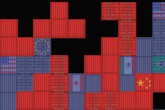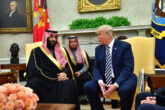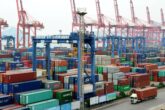August 13, 2020
As Warfighting Becomes High-Tech, Export Controls are the Front Line
Export controls are effective in supporting the core U.S. policy goal of protecting U.S. military might. They restrict exports of the most important items and technology that give the United States a military advantage. Items and technology that are strictly military in use always have been highly controlled, and there have been no major changes in those regulations in the last several years. The area undergoing drastic change covers so called “dual-use” items that have military applications, but that also are commonly used for commercial purposes. Changes in U.S. export controls over dual-use items are driven largely by China’s plan to create more interconnections between civilian and military companies, which has been part of almost every major strategic initiative since Xi Jinping came to power in 2012.
Export controls are most effective in instances where the United States has a technological advantage that no other country can match. Regulators are realistic and know that the technology eventually will seep out of the United States, be overtaken by new technology, or be matched by comparable technology developed by other countries. However, keeping U.S. military adversaries several years behind the United States in terms of technology is incredibly important to American military preeminence and has served us well.
Export controls are most effective in instances where the United States has a technological advantage that no other country can match.
Warfighting has moved into the high-tech realm. The U.S. military excels at targeting capabilities, electronic jamming, cyber warfare, advanced satellite capability, and the use of drones. These same technologies support commercial applications such as autonomous vehicles, firewalls, and weather monitoring. Quantum technology and robotics have myriad uses. So where do we draw the line? The United States needs to continue to do whatever is necessary to give its military the ability to stay several years ahead of its adversaries. But the blurring of lines between civilian and military uses makes that task complex.
Because technology is virtual, it is more difficult to control than products that can be stopped at the border. U.S. technology can bounce to Europe and then to China in a second. The United States can be most effective leading a group of like-minded nations rather than acting alone. It can revitalize alliances so that the controls become more global as opposed to unilateral. The Wassenaar Arrangement, the Missile Technology Control Regime, the Australia Group, and the Nuclear Suppliers Group have served as vehicles for collaboration in the past, and they can be revitalized to support U.S. policy objectives. Sometimes the United States needs to act alone, but where it can achieve international collaboration, that is the most effective path forward to control exports.
About the Author
F. Amanda DeBusk is a Partner at Dechert LLP.
Learn More
CNAS has asked a group of experts and policymakers to offer their perspectives on the policy goals that U.S. export controls should serve, and how and under what circumstances U.S. export controls can effectively achieve those policy goals.

Export Controls Are a Defining Instrument of U.S. National Security
A group of experts and policymakers offers their perspectives on the policy goals that U.S. export controls should serve....
Read MoreMore from CNAS
-
Game Over?
The trade wargame suggests that sustained high tariffs could create leverage and urgency to spur action toward a productive restructuring of the international trade system....
By Emily Kilcrease & Geoffrey Gertz
-
Middle East Security / Energy, Economics & Security
Trump Inks $600 Bn Deal In Saudi Arabia | Musk, Blackrock CEO Flank Trump In Gulf VisitIn today's episode of India Global, U.S. President Donald Trump secured a $600 billion commitment from Saudi Arabia on Tuesday to invest in the United States. NDTV's Gaurie Dw...
By Daniel Silverberg
-
Energy, Economics & Security / Technology & National Security
Tariffs and Tech: An Uncertain RecipeHigher tariffs could prompt American cloud companies to shift more of their capital investments abroad....
By Pablo Chavez
-
Trump Tariffs: How Will U.S. Plans Reshape the Global Economy?
Donald Trump says he's already decided the tariffs he will impose on countries that export goods to America, including the United Kingdom. Channel 4 hears from Emily Kilcrease...
By Emily Kilcrease




